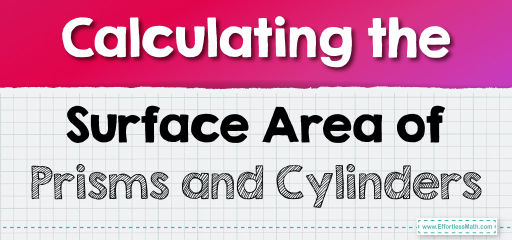Calculating the Surface Area of Prisms and Cylinders

Examples
Practice Questions:
- Determine the surface area of a rectangular prism with dimensions \(6 \text{ cm} \times 5 \text{ cm} \times 8 \text{ cm}\).
- What is the surface area of a cylinder with a radius of \(5 \text{ cm}\) and a height of \(10 \text{ cm}\)?
- \( 236 \text{ cm}^2 \)
- \( 471 \text{ cm}^2 \)
Original price was: $109.99.$54.99Current price is: $54.99.
Original price was: $109.99.$54.99Current price is: $54.99.
Original price was: $109.99.$54.99Current price is: $54.99.
Related to This Article
More math articles
- How to Determine Indeterminate Form and Vague Limits
- Top 10 Tips to Create a PERT Math Study Plan
- ParaPro Math FREE Sample Practice Questions
- How to Use Tables to Write Proportional Relationship Equations
- Types of Graphs
- 4th Grade FSA Math Worksheets: FREE & Printable
- 7th Grade Scantron Math Worksheets: FREE & Printable
- Top 10 3rd Grade MCAS Math Practice Questions
- 10 Most Common HiSET Math Questions
- The Ultimate 7th Grade MAP Math Course (+FREE Worksheets)




























What people say about "Calculating the Surface Area of Prisms and Cylinders - Effortless Math: We Help Students Learn to LOVE Mathematics"?
No one replied yet.